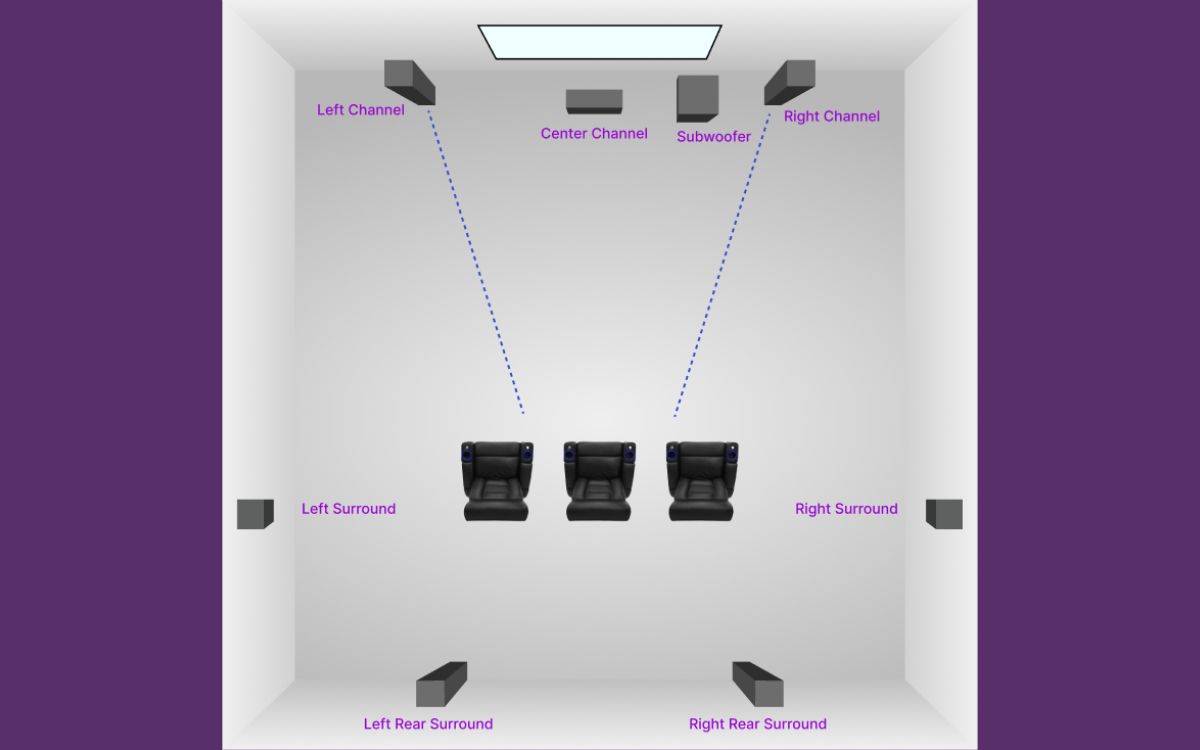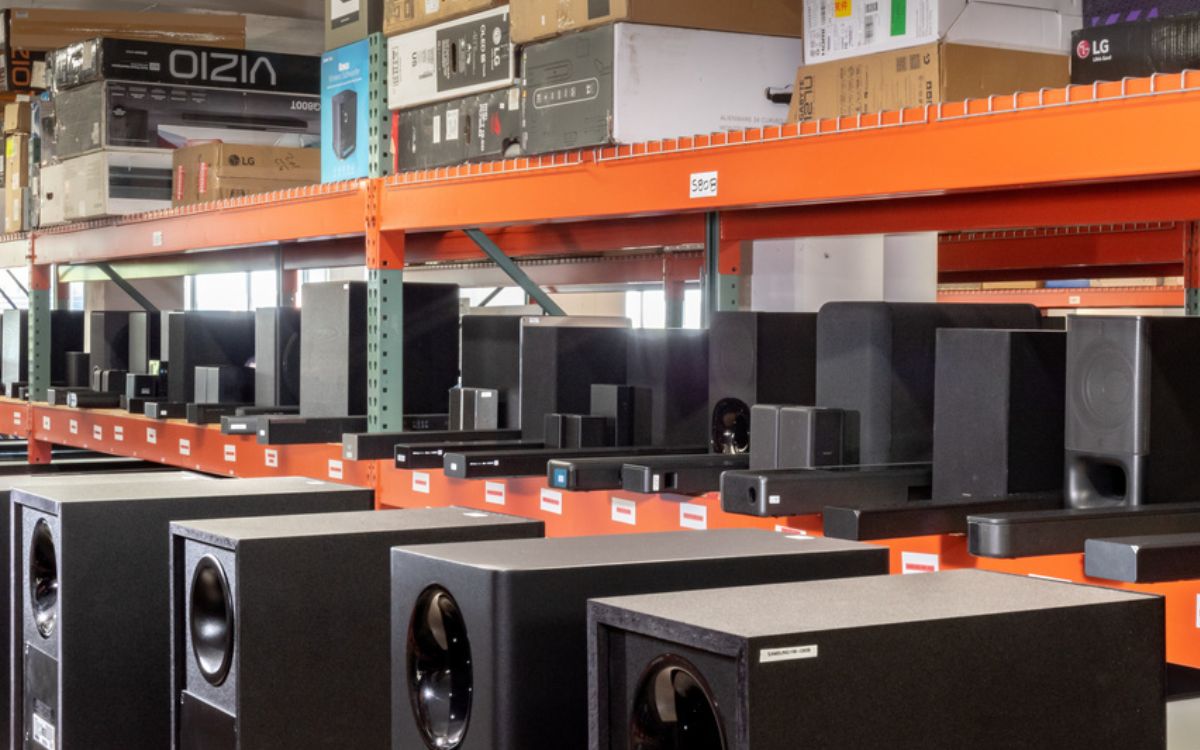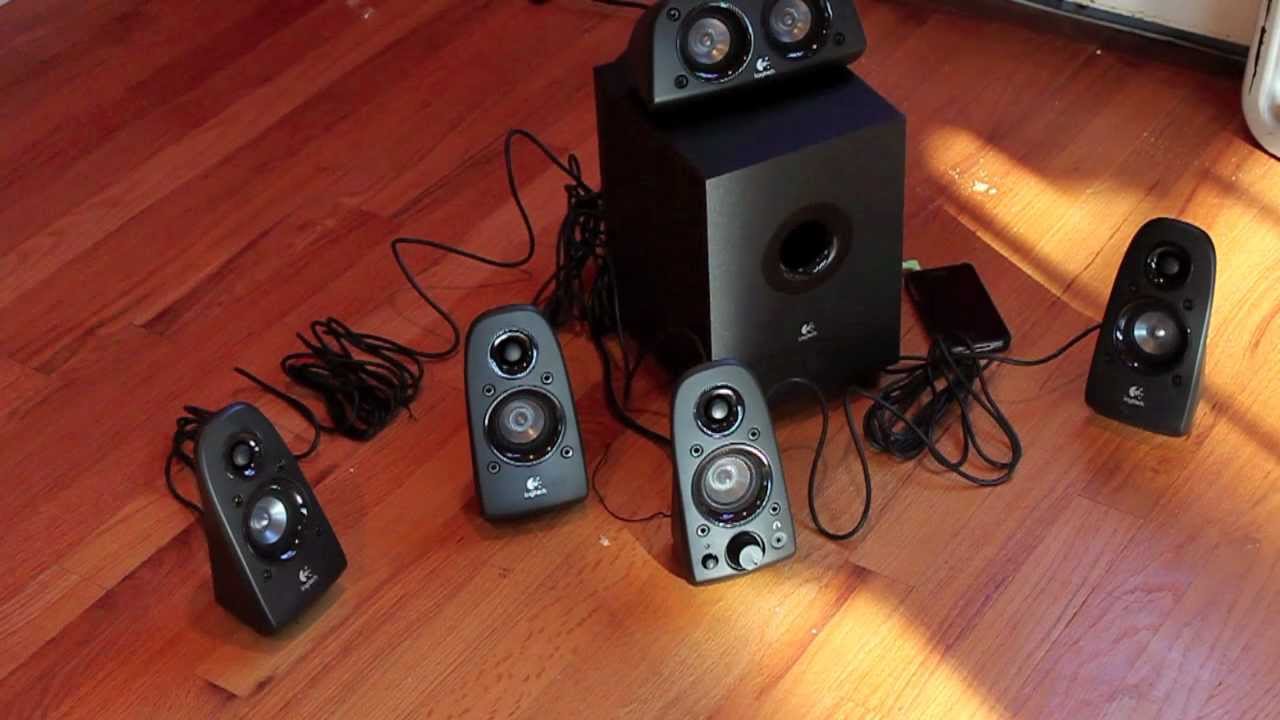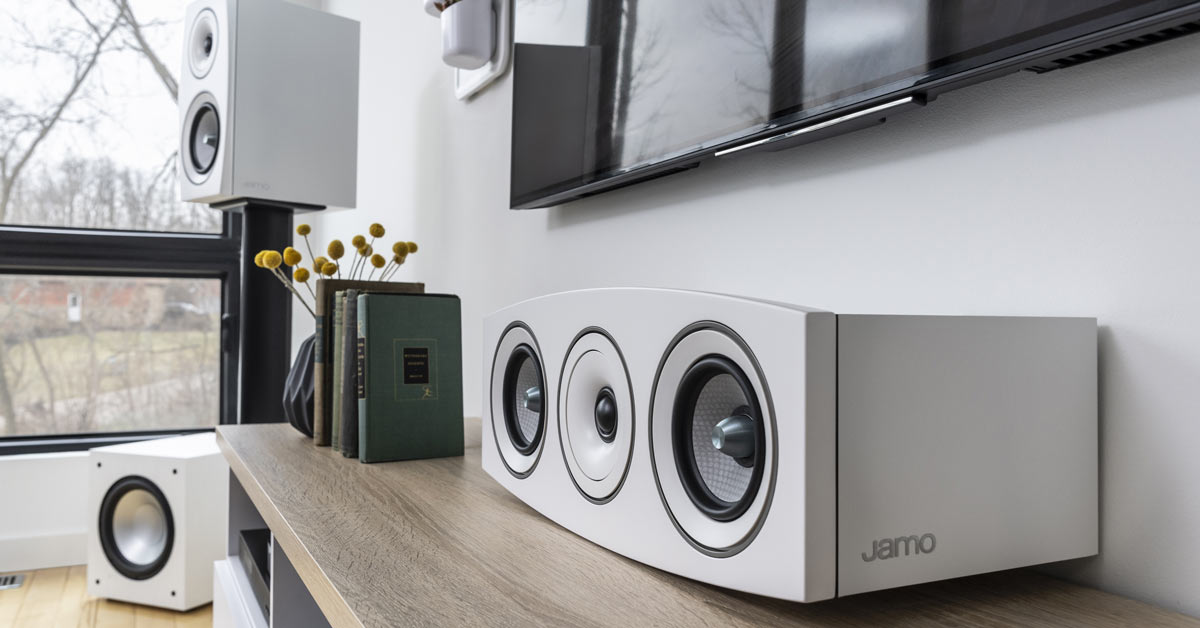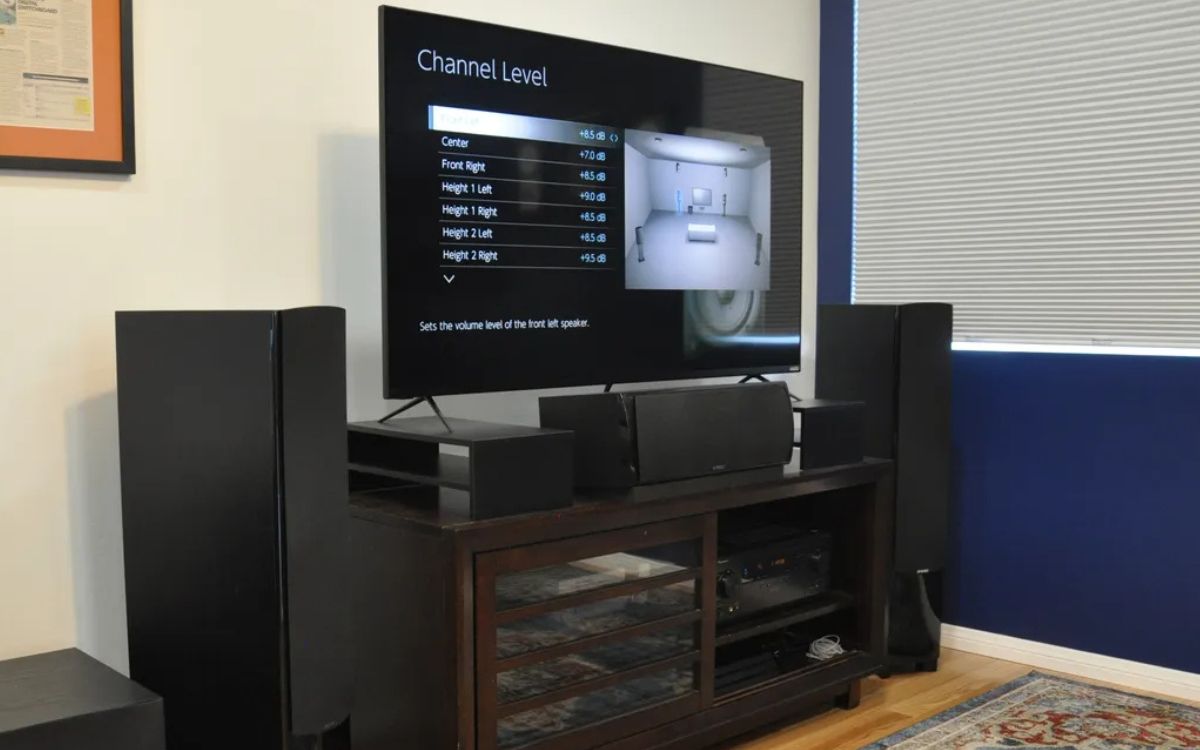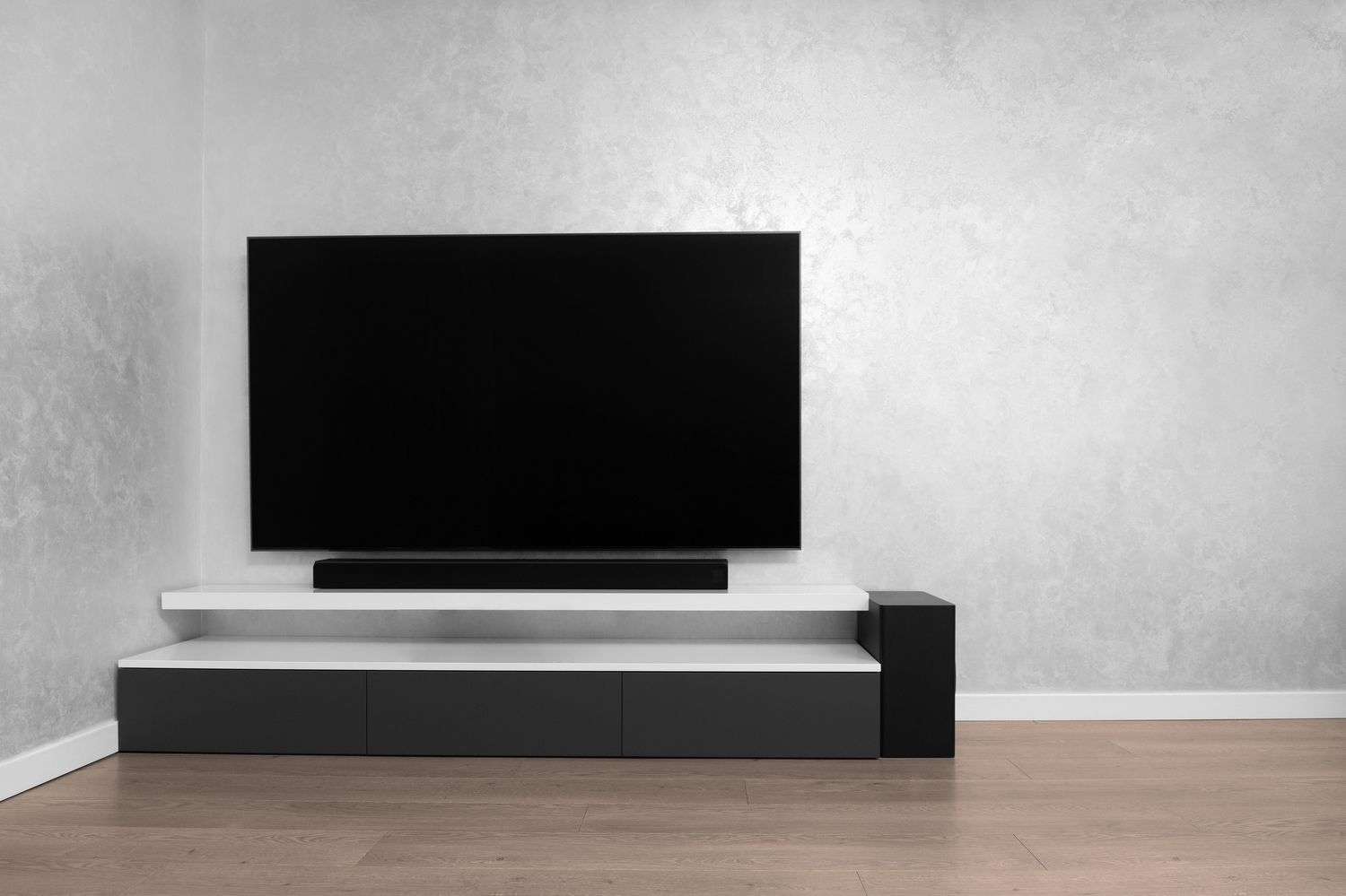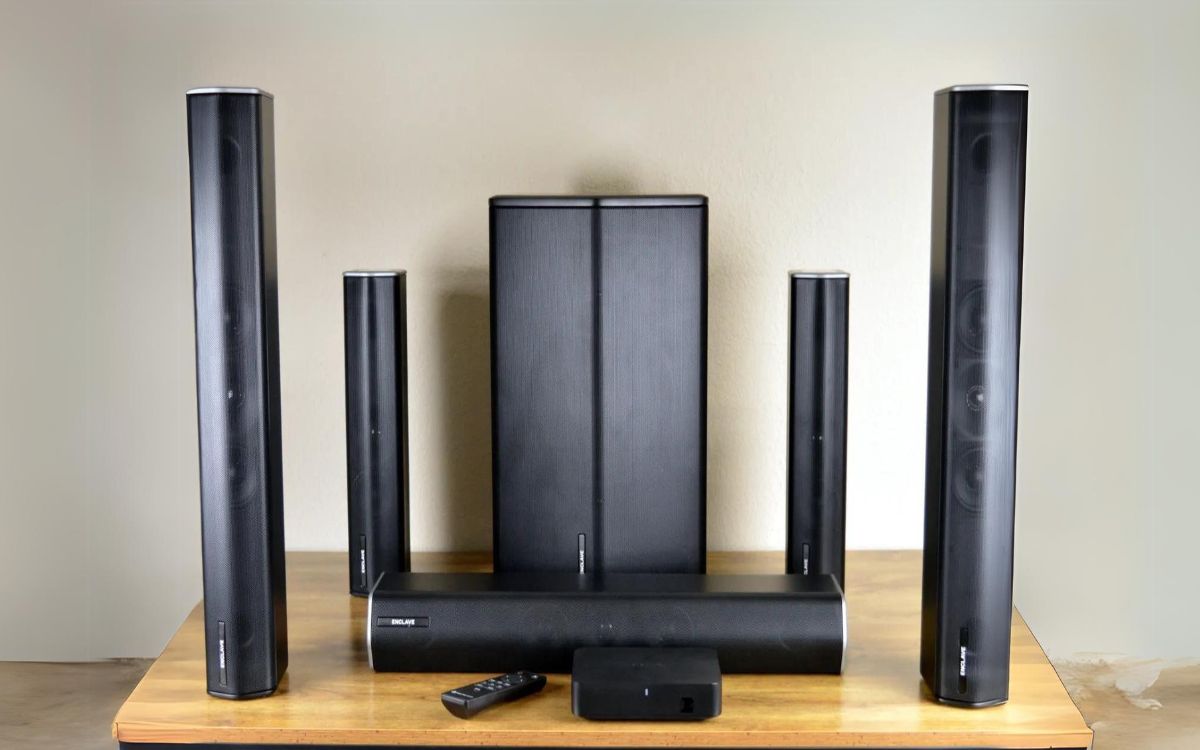Home>Production & Technology>Surround Sound>How To Place Speakers For Surround Sound
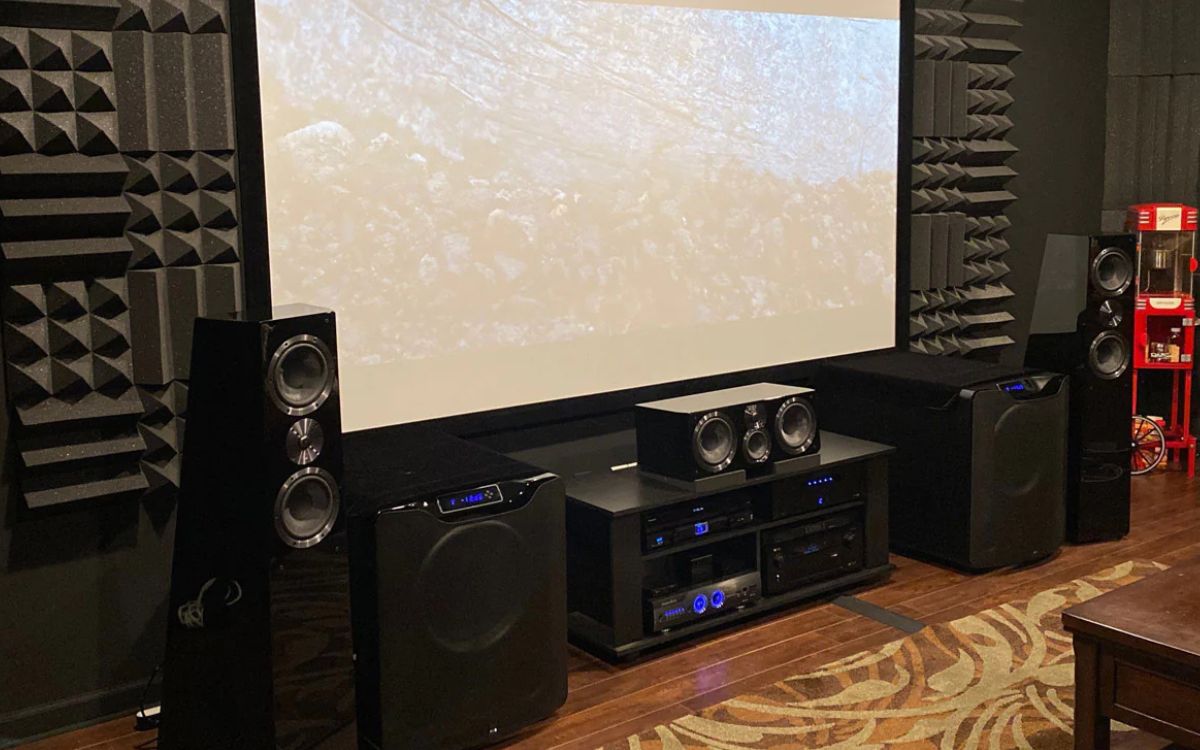

Surround Sound
How To Place Speakers For Surround Sound
Modified: January 22, 2024
Learn how to strategically place your speakers for optimal surround sound experience. Enhance your audio immersion and create an immersive home theater setup with our expert tips.
(Many of the links in this article redirect to a specific reviewed product. Your purchase of these products through affiliate links helps to generate commission for AudioLover.com, at no extra cost. Learn more)
Table of Contents
Introduction
Welcome to the world of surround sound! If you’re a movie enthusiast or a music lover, you know that a high-quality audio experience can elevate your entertainment to a whole new level. Surround sound systems are designed to immerse you in a multidimensional audio environment, bringing movies, music, and games to life in your own home.
But to truly harness the power of surround sound, it’s crucial to understand how to properly place your speakers. The placement of speakers is essential in creating an optimal audio experience, where sound effects come from all directions, enveloping you in a rich and dynamic soundscape.
In this article, we will delve into the world of surround sound speaker placement. We’ll explore the factors you need to consider, the recommended speaker placement configurations, and provide tips on calibration and testing. Whether you’re setting up a 5.1, 7.1, or even more elaborate surround sound system, this guide will help you achieve the best audio performance possible.
So, let’s get started and learn how to perfectly place your speakers for an immersive and captivating surround sound experience!
Understanding Surround Sound
Before we delve into speaker placement, let’s first understand the basics of surround sound. Surround sound is a technique used to create a three-dimensional audio experience, where sounds come from multiple directions and angles, replicating the natural way we perceive sound in the real world.
A typical surround sound system consists of multiple speakers strategically placed around a room, working together to immerse the listener in a truly captivating audio environment. The most common configuration is the 5.1 setup, which includes five speakers and a subwoofer. However, there are more advanced systems like 7.1, 9.1, and even higher, which add additional speakers to further enhance the surround sound experience.
The system is named based on the number of main speakers (excluding the subwoofer) and the number of subwoofers. The first digit represents the number of main speakers, while the second digit represents the number of subwoofers. For example, a 7.1 setup includes seven main speakers and one subwoofer.
Each speaker in a surround sound system is designated to reproduce specific audio channels. The main speakers, usually consisting of a center speaker, left and right front speakers, and left and right surround speakers, handle the majority of the audio content. They deliver dialogue, music, and most of the sound effects, while the subwoofer adds depth and impact to low-frequency sounds like explosions and rumbling bass.
Now that we have a basic understanding of surround sound, let’s move on to the factors you need to consider when placing your speakers to optimize your audio experience.
Factors to Consider when Placing Speakers
When it comes to speaker placement for surround sound, there are several factors you need to take into consideration. The layout of your room, the seating arrangement, and the acoustics of the space can all impact the effectiveness of your speaker placement. Here are some key factors to keep in mind:
- Room Size and Shape: The size and shape of your room play a significant role in determining the ideal speaker placement. A smaller room may require different placement strategies compared to a larger room. Additionally, irregularly shaped rooms may introduce acoustic challenges, which need to be addressed through strategic speaker positioning.
- Listening Position: The location where you typically sit or watch movies is a critical consideration. The goal is to ensure that the sound reaches you directly without any obstructions or reflections. The ideal listening position is often referred to as the “sweet spot.” Speaker placement should be optimized to deliver the best audio experience to this sweet spot.
- Speaker Specifications: The specifications of your speakers, such as their frequency response, power handling, and dispersion characteristics, should also influence their placement. Understanding these specifications will help you determine the optimal positioning and angles for each speaker to ensure the best sound reproduction.
- Surround Sound Encoding: Different movies, music recordings, and games utilize various surround sound encoding formats, such as Dolby Digital, DTS, or Dolby Atmos. These formats have specific channel assignments and recommended speaker configurations. It’s important to be aware of the encoding used to optimize your speaker placement accordingly.
- Reflections and Acoustics: The reflections of sound waves from walls, floors, and ceilings can either enhance or detract from the surround sound experience. Consider the materials and layout of your room and take steps to minimize unwanted reflections. Acoustic treatments like sound-absorbing panels can help improve sound clarity and reduce echo or reverberation.
By considering these factors, you can determine an optimal speaker placement strategy that takes into account the specific characteristics of your room and audio system. In the next sections, we will provide recommended speaker placement configurations for different types of speakers in a surround sound setup.
Speaker Placement Recommendations
Proper placement of each speaker in your surround sound system is crucial for achieving the best audio experience. Here are some general guidelines to help you position your speakers:
Front Speakers
The front speakers, consisting of a center channel speaker, left front speaker, and right front speaker, are responsible for delivering the majority of the audio content including dialogue, music, and sound effects. Here’s how to position them:
- The center channel speaker should be placed directly above or below the display screen, at the same height as the front left and right speakers.
- The front left and right speakers should be positioned at ear level, slightly angled towards the listening area. They should ideally form an equilateral triangle with the center channel speaker.
Surround Speakers
The surround speakers, known as the left surround and right surround speakers, add depth and dimension to the audio experience. Follow these recommendations for their placement:
- The surround speakers should be positioned slightly behind and to the sides of the listening area, approximately at ear level or slightly above.
- They should be angled towards the listening area to provide a more immersive sound experience.
- Try to ensure that the distance between the surround speakers and the listening position is roughly equal to the distance between the front speakers and the listening position.
Center Speaker
The center speaker is responsible for delivering clear and focused dialogue. Here are the recommended placement guidelines:
- The center speaker should be placed either above or below the display screen, directly facing the listener.
- If mounting it above the screen, make sure it’s angled slightly downward to point towards the listening area.
Rear Speakers
In a 7.1 or higher surround sound setup, rear speakers are added to further enhance the surround sound experience. Here’s how to position them:
- The rear speakers should be placed behind the listening area, ideally mounted on the back wall, and positioned slightly above ear level.
- Similar to the surround speakers, they should be angled towards the listening area to direct the sound towards the audience.
Subwoofer Placement
The subwoofer is responsible for reproducing low-frequency sounds, adding depth and impact to explosions, rumbling bass, and other effects. Follow these suggestions for subwoofer placement:
- The subwoofer is non-directional, so it can be placed anywhere in the room for the best bass response.
- Experiment with different locations to find the spot where the bass sounds rich and balanced.
- Common placement options include the front of the room, a corner, or even inside a cabinet or entertainment center.
Keep in mind that these placement recommendations are general guidelines. They may need to be adjusted depending on the specific requirements and characteristics of your room. Additionally, consider referring to the user manual or consulting with an audio professional for further guidance.
Front Speakers
The front speakers are a crucial component of your surround sound system, as they handle the majority of the audio content, including dialogue, music, and sound effects. Proper placement of the front speakers is essential for creating a balanced and immersive audio experience. Here’s how to position them:
1. Center Channel Speaker: The center channel speaker plays a vital role in reproducing clear and focused dialogue. It should be positioned directly above or below the display screen, at the same height as the front left and right speakers. If mounting the center speaker above the screen, make sure it is angled slightly downward to aim the sound towards the listening area.
2. Left and Right Front Speakers: The left and right front speakers create the stereo imaging and carry a significant portion of the audio content. Position them at ear level, slightly angled towards the listening area. They should ideally form an equilateral triangle with the center channel speaker. Placing the front speakers too close to a wall can result in unwanted reflections, so try to maintain some distance from the walls to avoid this issue.
By positioning the front speakers in this manner, you ensure that the soundstage is well-defined and that the audio is accurately localized to the on-screen action. The properly balanced audio from the front speakers enhances the overall theatrical experience of movies and the fidelity of music playback.
Take note that the specific placement of the front speakers may vary depending on the room’s layout and acoustic characteristics. Experimenting with slight adjustments can help you find the sweet spot where the sound is most balanced and immersive. Additionally, consider using speaker stands or wall mounts to optimize the positioning of your front speakers.
Remember to consult the user manual or refer to the manufacturer’s recommendations for your specific speakers to ensure that you achieve the best sound quality and performance. Properly placing and positioning your front speakers is a crucial step in creating an exceptional surround sound experience for your home theater or audio setup.
Center Speaker
The center channel speaker plays a vital role in a surround sound system by reproducing dialogue and other center-panned audio content with clarity and focus. Its proper placement is crucial to ensure that the dialogue is intelligible and accurately localized to the on-screen action. Here’s how to position your center speaker:
1. Above or Below the Display: The center speaker should be positioned either above or below the display screen, aligned with the front edge of the screen. This placement allows the sound from the center channel to appear to emanate from the on-screen characters, creating a more immersive experience. If possible, align the vertical axis of the center speaker with the viewing height of your seated position.
2. Angle and Tilt: Whether you place the center speaker above or below the display, it’s important to angle and tilt it towards the listening area. This ensures that the sound is directed towards the audience, enhancing audio clarity and intelligibility. If the center speaker is mounted above the screen, angle it slightly downward towards the listening area. This helps to focus the dialogue towards the viewers and minimizes any potential reflections from the ceiling.
3. Distance from the Display: It’s important to position the center speaker as close as possible to the display screen, while still maintaining a visually pleasing setup. This proximity helps to create a seamless blend between the on-screen action and the dialogue, enhancing the overall realism of the audio experience.
4. Isolation: To minimize vibrations and unwanted resonance, consider using speaker isolation pads or stands. These accessories help to decouple the center speaker from the surface it sits on and reduce any potential interference or distortion caused by vibrations.
By following these placement guidelines, you can ensure that the dialogue in movies, TV shows, and other content is crisp, clear, and accurately positioned in the center of the soundstage. The center speaker serves as the anchor of the surround sound system, providing a foundation for a cohesive and immersive audio experience.
Remember to consult the user manual or the manufacturer’s recommendations for your specific center speaker model, as some speakers may have specific placement instructions to achieve optimal sound performance. Additionally, consider conducting audio calibration tests, using an audio calibration tool or following the setup procedures of your audio receiver, to fine-tune the level and synchronization of the center speaker with the other speakers in your surround sound system.
Surround Speakers
The surround speakers are a crucial component of a surround sound system, bringing a sense of depth and dimension to the audio experience. They create an immersive environment by delivering ambient sounds, background music, and sound effects that originate from the sides or rear of the listener. Proper placement of the surround speakers is essential for creating a balanced and enveloping surround sound experience. Here’s how to position your surround speakers:
1. Positioning: The surround speakers should be positioned slightly behind and to the sides of the primary listening area. Ideally, they should be placed at ear level or slightly above it. The goal is to achieve an even distribution of sound around the room without overpowering the front soundstage. Place the surround speakers at an equal distance from the listening position to ensure a balanced surround effect.
2. Angle and Direction: Angle the surround speakers towards the listening area to direct the sound towards the audience. This will help create a more immersive soundstage and enhance the overall surround sound experience. Experiment with the angle and direction to find the optimal position that provides the best sound coverage and imaging.
3. Distance from the Listener: The distance between the surround speakers and the listener should be roughly equal to the distance between the front speakers and the listener. This symmetric positioning helps to maintain a cohesive and balanced surround soundstage. Avoid placing the surround speakers too close to the listening area, as it may result in a localized and distracting sound experience.
4. Mounting Options: Depending on your setup and room configuration, you can choose to wall-mount the surround speakers or use dedicated speaker stands. Wall-mounting offers a clean and unobtrusive look, while speaker stands provide more flexibility in positioning. If using stands, make sure they are stable and positioned correctly to minimize vibrations and potential reflections.
Remember, the specific placement of the surround speakers may vary depending on the layout and acoustics of your room. It’s important to experiment with different speaker positions to find the placement that works best for your specific setup and listening preferences.
Consult the user manual or manufacturer’s recommendations for your specific surround speaker model, as they may provide additional guidelines for optimal placement and configuration. Additionally, consider utilizing audio calibration tools or following the setup procedures of your audio receiver to fine-tune the level and synchronization of the surround speakers with the other speakers in your surround sound system.
With properly placed surround speakers, you can experience a truly immersive audio environment, where sound effects and music come alive from all directions, enhancing your overall entertainment experience.
Rear Speakers
In a 7.1 or higher surround sound setup, rear speakers are added to further enhance the immersive surround sound experience. Rear speakers help create a sense of envelopment by delivering audio from behind the listener, adding depth and realism to movies, music, and games. Here’s how to position your rear speakers for optimal performance:
1. Placement: Rear speakers should be positioned behind the primary listening area, on the back wall of the room. Ideally, they should be mounted at a height slightly above ear level. The goal is to achieve a balanced and immersive soundstage without overpowering the other speakers in the system. It’s important to ensure that the rear speakers are symmetrical and positioned equidistant from the listening position.
2. Angle and Direction: Like the surround speakers, angle the rear speakers towards the listening area. This helps to direct the sound towards the audience, enhancing the sense of envelopment. Experiment with the angle and direction to find the position that provides the best balance between direct sound and reflected sound from the walls.
3. Distance from the Listener: The distance between the rear speakers and the listener should be approximately the same as the distance between the front speakers and the listener. This balanced positioning helps to maintain an even soundstage and cohesive audio experience. Avoid placing the rear speakers too close to the listening area, as it may result in a localized sound effect.
4. Mounting Options: Consider wall-mounting the rear speakers for stability and proper positioning. Wall-mount brackets designed for surround speakers can help achieve the desired height and angle. Make sure to secure the brackets properly and avoid any obstructions that may interfere with the sound dispersion.
Remember, the specific placement of rear speakers may vary based on the room’s layout and acoustics. It’s important to experiment with different positions to find the placement that delivers the most immersive and balanced surround sound experience for your specific room.
Refer to the user manual or manufacturer’s recommendations for your specific rear speaker model to ensure the best sound performance. Additionally, utilize audio calibration tools or follow the setup procedures of your audio receiver to calibrate the level and synchronization of the rear speakers with the rest of the speakers in your surround sound system.
With well-placed rear speakers, you can truly immerse yourself in the audio experience, feeling as if you are in the midst of the action and enveloped by a multidimensional soundstage.
Subwoofer Placement
The subwoofer is a vital component of a surround sound system, responsible for reproducing deep, low-frequency sounds such as explosions, thunder, and bass-heavy music. Proper placement of the subwoofer ensures that you achieve the best possible bass response and integration with the rest of your audio setup. Here are some tips for placing your subwoofer:
1. Bass Crawl: To find the optimal location for your subwoofer, perform the “bass crawl” technique. Place the subwoofer in your primary listening position and crawl around the room, listening for the spot with the most balanced and impactful bass. Once you find that spot, that’s the ideal location for your subwoofer.
2. Corner Placement: One common placement option for a subwoofer is in the front corner of the room. Corner placement takes advantage of room boundaries to enhance bass response. Experiment with different corners to find the one that provides the best bass performance. However, be mindful that corner placement may result in boomy or uneven bass in some rooms, so it’s important to test and adjust accordingly.
3. Front or Side Placement: If corner placement doesn’t yield the desired results, you can try placing the subwoofer along the front or side walls of the room. Experiment with different positions to find the spot with the most balanced and impactful bass response. Avoid placing the subwoofer too close to walls or furniture that may obstruct or muffle the low-frequency output.
4. Isolation: To prevent vibrations and resonance from affecting the sound quality, consider using a subwoofer isolation pad or decoupling feet. These can help minimize any unwanted vibrations or rattling noises. Additionally, placing the subwoofer on a dedicated subwoofer stand or a solid surface can further enhance bass performance and reduce interference.
5. Phase and Level Adjustment: After placing the subwoofer, make sure to adjust the phase and volume (level) settings on both the subwoofer and your audio receiver. This allows for proper synchronization and integration with the other speakers in your surround sound system, achieving a seamless and balanced audio experience.
Remember that the optimal subwoofer placement may vary depending on the acoustics of your room, the specific characteristics of your subwoofer, and personal preference. It’s important to experiment with different placements and settings to find the position that delivers the best bass response for your listening environment.
Consult the user manual or manufacturer’s recommendations for your specific subwoofer model for additional guidelines on placement and setup. Additionally, utilizing a calibration tool or following the setup procedures of your audio receiver can help fine-tune the subwoofer’s performance and ensure optimal integration with the rest of your surround sound system.
With proper subwoofer placement, you can enjoy deep, rumbling bass that adds impact and excitement to your favorite movies, music, and games.
Calibration and Testing
Once you have positioned your speakers for surround sound and placed your subwoofer, it’s crucial to calibrate and test your audio system to achieve optimal performance. Calibration ensures that all the speakers are balanced, properly synchronized, and delivering the best sound quality. Here are some steps to calibrate and test your surround sound system:
1. Audio Receiver Setup: Begin by accessing the settings menu on your audio receiver. Most modern receivers have an automatic speaker calibration feature that can analyze your room’s acoustics and optimize speaker settings. Follow the on-screen prompts or consult your receiver’s manual for guidance on running the calibration program.
2. Channel Level Adjustment: During the auto-calibration process or in the receiver’s manual setup menu, you’ll have the option to adjust the channel levels. This allows you to balance the sound output from each speaker. Use a sound level meter or rely on your ears to ensure that all the speakers are producing a similar volume level from your primary listening position.
3. Phase Alignment: Check the phase alignment of your subwoofer. Most subwoofers have a phase switch that can be set to either 0 or 180 degrees. Experiment with both settings and choose the one that results in the most impactful and integrated bass response. You may also need to adjust the subwoofer’s volume level to achieve the desired balance with the rest of your speakers.
4. Listening Tests: Once the calibration process is complete, it’s time to put your surround sound system to the test. Play a variety of audio content, such as movies, music, and games, that showcase different sound effects and frequencies. Listen carefully for any imbalance, distortion, or inconsistencies in the audio. Make note of any adjustments that may be needed, such as fine-tuning individual speaker levels or refining the subwoofer settings.
5. Professional Calibration: For those seeking the utmost precision and accuracy, consider consulting with an audio professional or utilizing specialized calibration tools. These professionals can analyze your room’s acoustics and use advanced tools to fine-tune your surround sound system for optimal performance. They can also offer recommendations on speaker placement and acoustic treatments, if necessary.
Remember, achieving the perfect sound setup may require some trial and error, as each room and audio system is unique. Take the time to listen critically and make adjustments accordingly. Regularly re-evaluate your setup if you make changes to your room layout or equipment, as these modifications may necessitate recalibration.
By calibrating and testing your surround sound system, you can ensure that it’s delivering the best audio performance, immersing you in a truly captivating and immersive sound experience.
Conclusion
Proper placement of speakers is paramount when setting up a surround sound system. By strategically positioning your speakers, you can create a truly immersive audio experience that enhances your enjoyment of movies, music, and games. Throughout this guide, we’ve covered important factors to consider when placing speakers, as well as specific recommendations for front speakers, center speakers, surround speakers, rear speakers, and subwoofers.
Understanding the layout and acoustics of your room, as well as following manufacturer guidelines, is crucial for achieving the best sound performance. Experimentation and calibration are key to fine-tuning your setup and ensuring optimal speaker synchronization and balance.
Remember, speaker placement is both an art and a science. While there are general guidelines to follow, every room is different, so it’s important to trust your ears and make adjustments based on your listening experience. Take the time to test and retest, making changes as necessary to achieve the most engaging surround sound experience possible.
Whether you’re watching a thrilling action movie, listening to your favorite music, or immersing yourself in the world of gaming, a well-placed surround sound system can transport you deeper into the content. The enveloping soundstage and precise localization of audio effects can truly elevate your entertainment experience.
So, go ahead and put these speaker placement tips into practice. Experiment, calibrate, and fine-tune your setup to create the perfect surround sound environment that immerses you in a world of rich, multidimensional audio. Sit back, relax, and enjoy the incredible audio experience that only a well-designed surround sound system can deliver.

